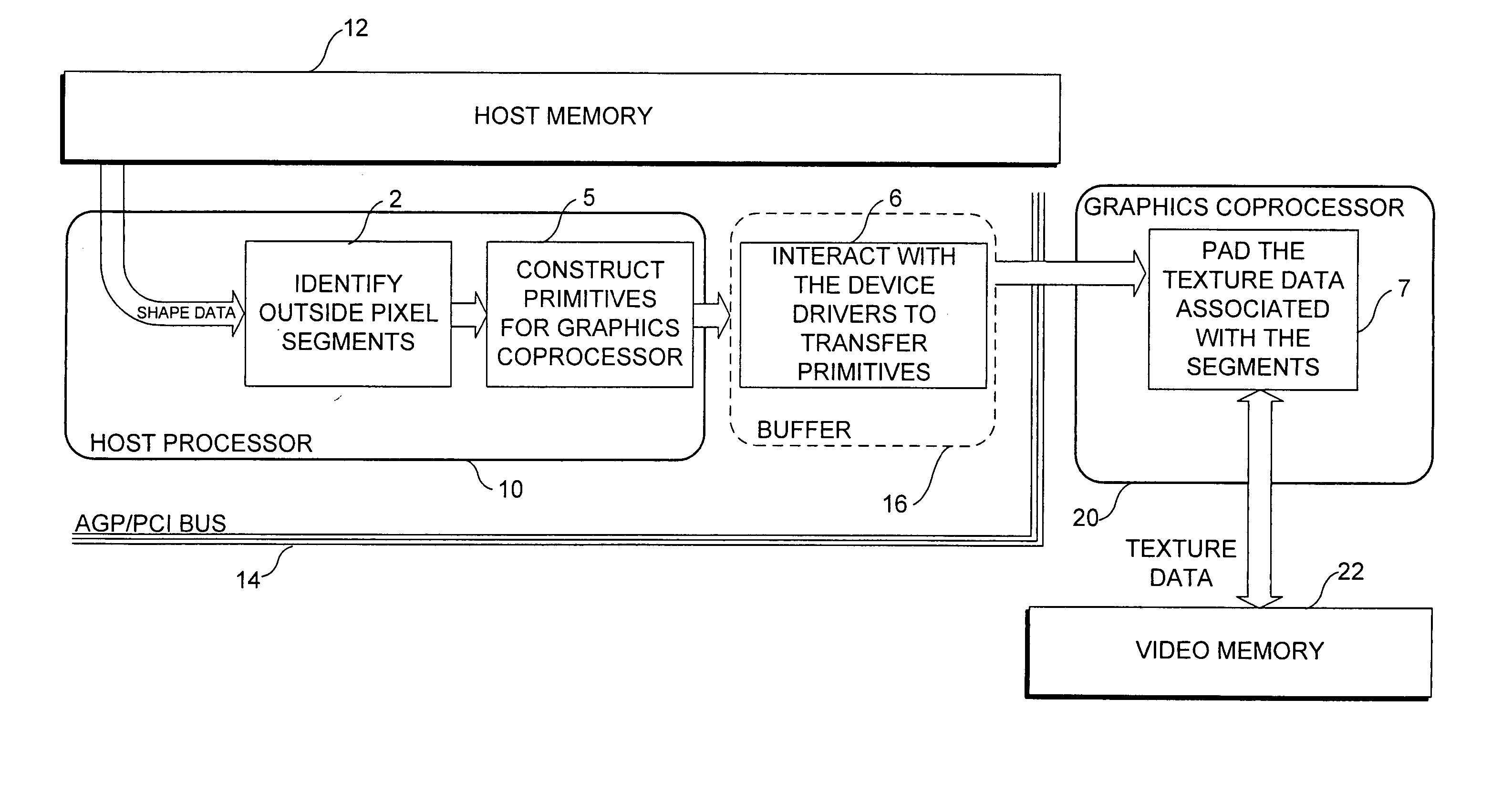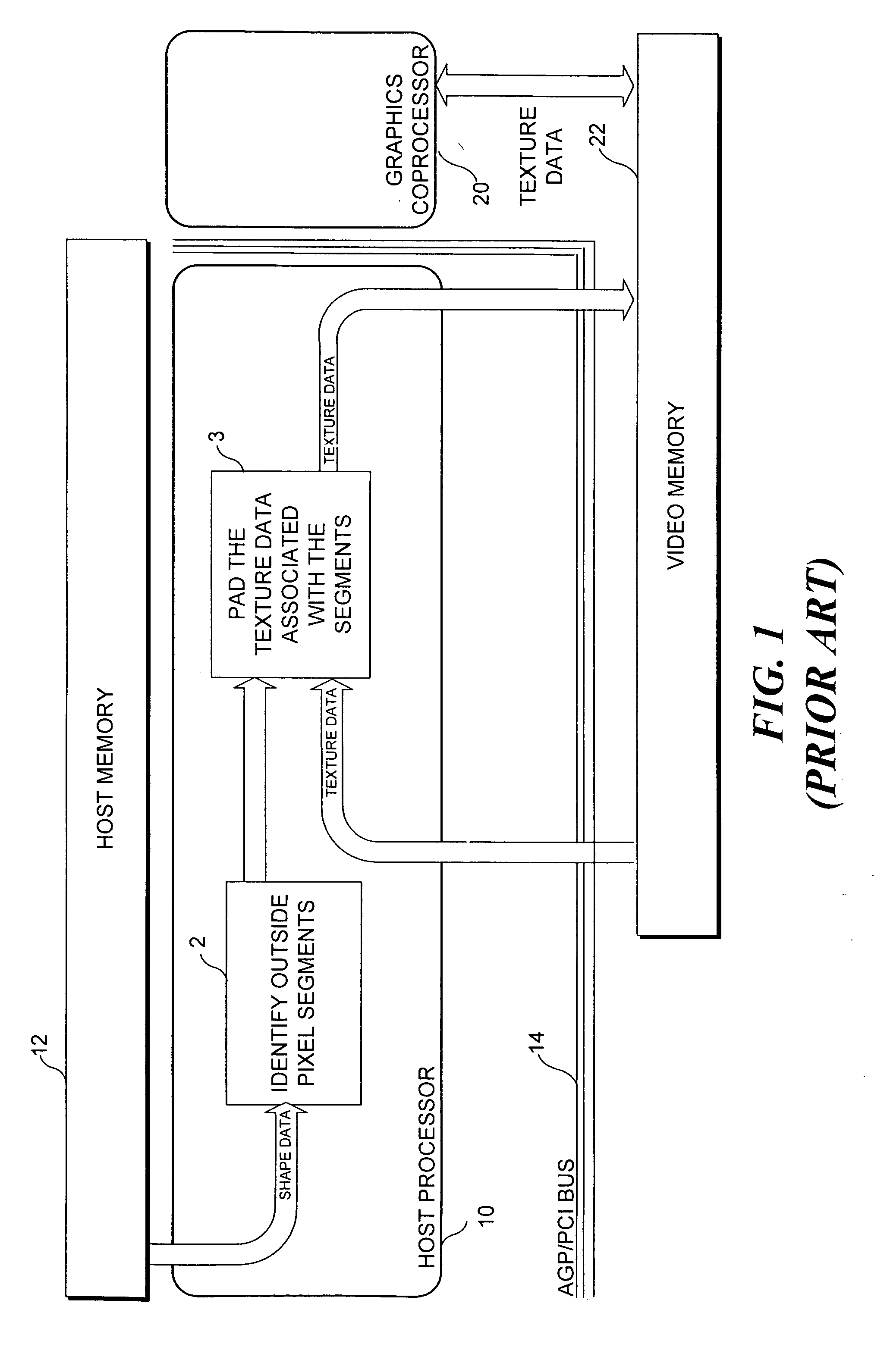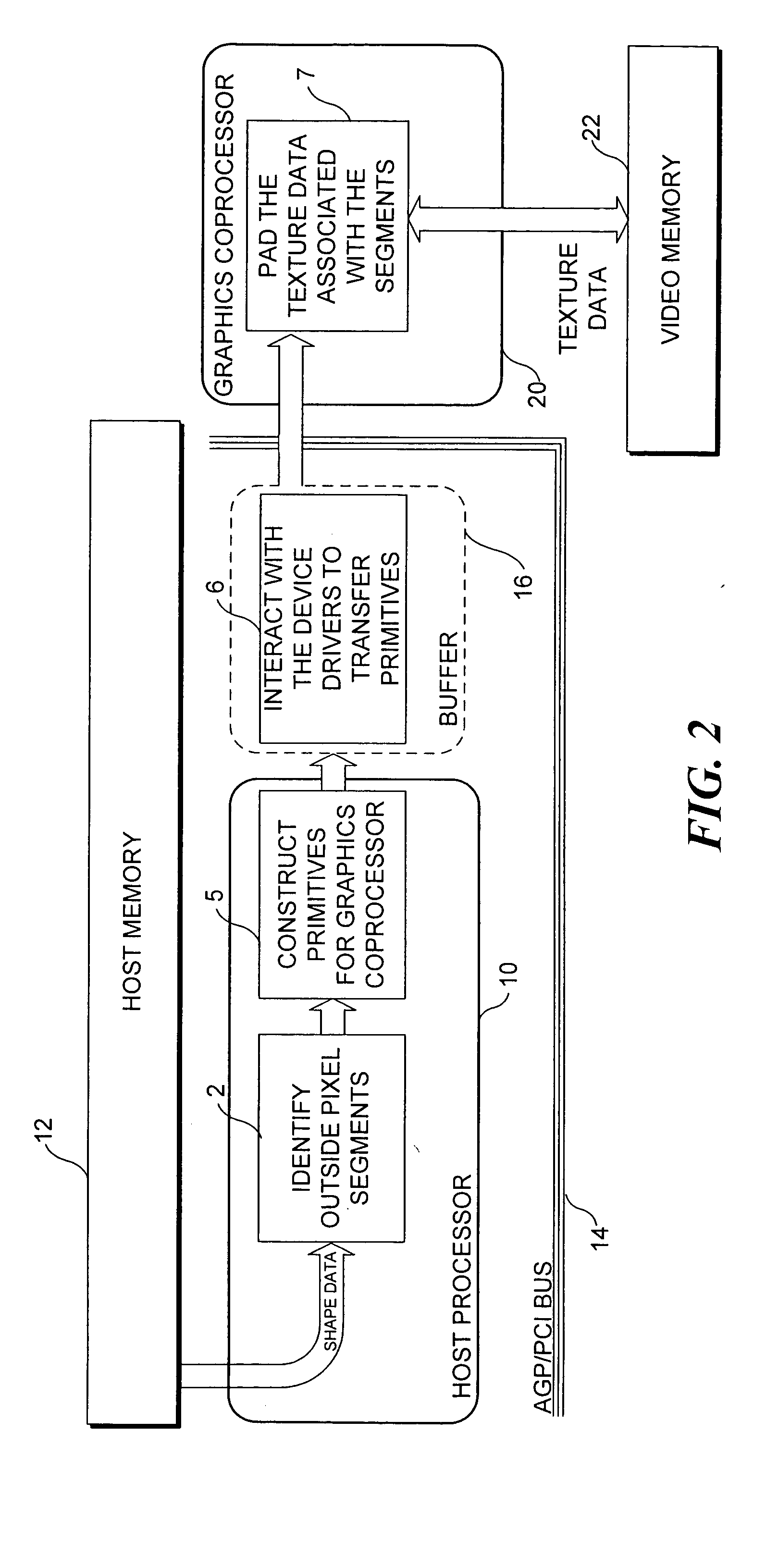Macroblock padding
a macroblock and padding technology, applied in the field of padding macroblocks, can solve the problems of boundary macroblock padding, inability to efficiently accelerate on typical graphics coprocessors, and inability to synchronize overhead. achieve the effect of not having significant synchronization overhead
- Summary
- Abstract
- Description
- Claims
- Application Information
AI Technical Summary
Benefits of technology
Problems solved by technology
Method used
Image
Examples
Embodiment Construction
[0023] In MPEG-4, each instance of a video object is called a VOP (sometimes referred to as simply a video object) and when applying this standard, a bitstream that contains VOPs of arbitrary shape, a bounding rectangle confining each VOP and a shape for the VOP must be decoded. IDCT and motion compensation are then performed for macroblocks in the bounding rectangle. During encoding, the macroblocks on and outside the shape boundary are padded to decrease the error values in motion prediction. Accordingly, during decoding, the pixels on and outside the shape boundary should be padded for correct motion compensation.
[0024]FIG. 1 is a schematic functional block diagram illustrating a prior art architecture for padding source texture data associated with pixels that lie outside the boundary of a video object. In this prior art architecture, a host processor 10 performs the padding. Host processor 10 is generally disposed on a mother board and obtains VOP shape data from a host memory...
PUM
 Login to View More
Login to View More Abstract
Description
Claims
Application Information
 Login to View More
Login to View More - R&D
- Intellectual Property
- Life Sciences
- Materials
- Tech Scout
- Unparalleled Data Quality
- Higher Quality Content
- 60% Fewer Hallucinations
Browse by: Latest US Patents, China's latest patents, Technical Efficacy Thesaurus, Application Domain, Technology Topic, Popular Technical Reports.
© 2025 PatSnap. All rights reserved.Legal|Privacy policy|Modern Slavery Act Transparency Statement|Sitemap|About US| Contact US: help@patsnap.com



